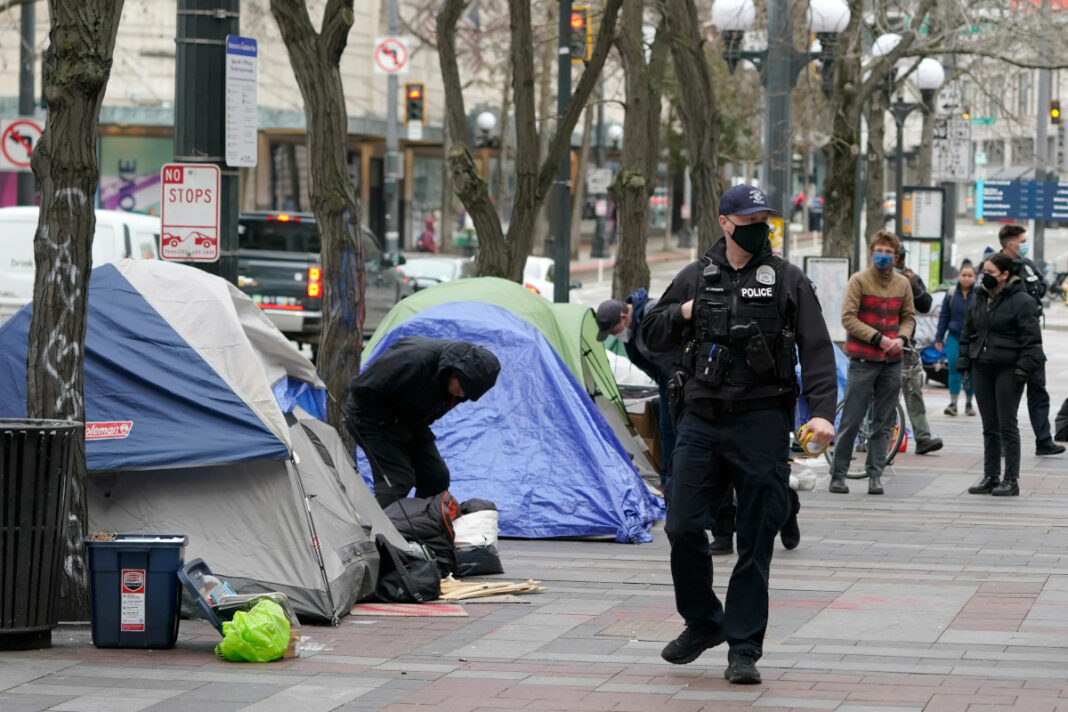People are homeless for more reasons today than in the past; and the reasons are even more avoidable than in the past. “The ‘old homeless’ of the 1950s were mainly old men living in cheap hotels on skid rows.” Today, people are homeless because of policymakers of zoning, and supply and demand.
“Homelessness rates have been climbing nationally by about 6% every year since 2017. Currently, there are estimated 582,462 individuals are experiencing homelessness in America, which increased after pandemic aid dried up.”
Politicians are economically savvy enough to create policies that restrict building more housing, caving to selfish homeowners who protest low-income housing in their area, but when homeless encampments rise because of those policies, political officials face a new emergency and have begun questioning their humanity.
Shortages of public shelters for the homeless have caused people to live on the streets, now city officials are relying on the Supreme Court to solve their problems for them by asking if it is cruel and unusual punishment to ticket or fine the homeless. Asking if it is cruel to kick someone when they are down is like asking if children should carry guns for self-defense. It is a stupid and shameful question and shows a lack of problem-solving skills.
More urban cities (and rural counties) are facing rising crime and public health crises because they have locked themselves in a box of confusion on how to handle a crisis they themselves created.
“The origins of the current homelessness crisis go back decades — to policies that stopped the U.S. from building enough housing, experts said. Seven million extremely low-income renters cannot get affordable homes, according to the National Low Income Housing Coalition.
Policymakers have made the crisis worse, instituting laws and zoning rules that limit the number of available homes. Most plots are reserved for only one family, instead of duplexes or apartment buildings that can house many more.
Homeowners also often protest proposed housing, effectively blocking it. They fear that more housing, particularly for low-income families, will change the makeup of their communities or reduce the value of their homes.”
In addition to the lack of affordable housing, other issues such as, “Poverty, mental illness, addiction and other issues do play roles, but they are less significant.”
Other Cause of Homelessness Include:
Lack of Affordable Housing: One of the primary drivers of homelessness is the lack of affordable housing. As housing costs rise faster than incomes, many individuals and families struggle to find accommodations they can afford, leading to potential eviction and ultimately homelessness.
Economic Instability: Job loss, unemployment, underemployment, and low wages can push people into homelessness. Without a stable source of income, individuals may find it difficult to cover basic living expenses, including housing.
Mental Health Issues: Mental health challenges, such as untreated mental illnesses, substance abuse disorders, and trauma, can contribute to homelessness. Individuals dealing with these issues may find it challenging to maintain stable housing and access necessary support services.
Family and Relationship Breakdowns: Conflict within families, domestic violence, and breakdowns in relationships can result in individuals being forced to leave their homes. They may lack a support network to turn to, leaving them vulnerable to homelessness.
Lack of Social Support: People who lack a strong social support system, including friends and family, are more susceptible to homelessness. A support network can provide emotional and financial assistance during times of crisis, reducing the risk of becoming homeless.
Indifference toward people who are struggling is becoming a normal part of American culture. As the homeless population grows, so do the excuses of how not to help them and the more blame is placed on them instead of the true cause of the problem, which is capitalism gone wrong.
“In the 1950s and 1960s homelessness declined to the point that researchers were predicting its virtual disappearance in the 1970s. Instead, in the 1980s, homelessness increased rapidly and drastically changed in composition.
DISCLAIMER: The content of Pro Liberation is firmly opinionated and is not meant to be interpreted as official news. We glean facts and quotes from mainstream news websites and abridge its meaning for readers to relate. We do not indulge in misinformation, conspiracy theories, or false doctrine but choose to express our right to free speech as citizens of this country and free born under God the Creator. We represent Nu Life Alliance Inc. a non-profit organization in the battle for social and economic justice. Donate to our cause at the following link. DONATE














